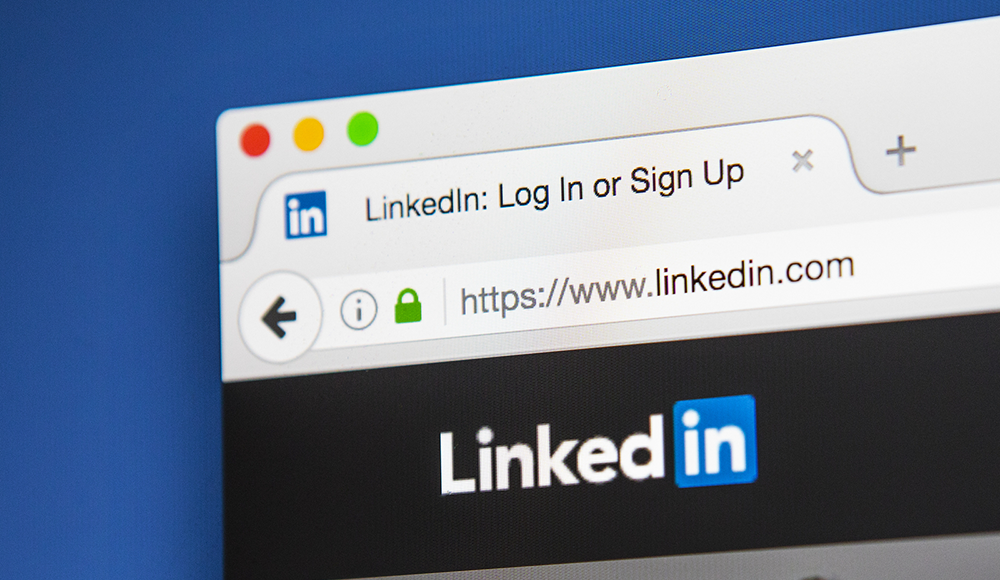6 LinkedIn Profile Rules You Can Ignore

There are numerous articles on how to properly write your LinkedIn profile. With all the advice floating around out there, it’s no wonder LinkedIn users are feeling confused or overwhelmed.
I am guilty of writing some of these articles, so I would like to provide some relief. What follows are some rules you canactually ignore for six important areas of your profile:
1. Your Background Image Must Reflect What You Do
I’m sure some people are freaking out because they don’t have images that illustrate what they do, such as a medical lab for a technician, million dollar houses for a realtor, etc. I get it. You want your background image to reflect what you do.
But don’t worry. People who visit your profile also want to know what motivates you. They want to see your personality and passions. If you don’t have a background image that reflects your profession, use one that reflects your passions — like this one that a hiking-loving client of mine uses:

2. Dress to the Nines for Your Profile Photo
Maybe you were told you had to wear a three-piece suit or a dress suit with a white blouse. In addition, you were told your profile photo should have a blank, boring background. I used to advise my clients to do exactly this.
Over the years, the idea of a “professional photo” has changed, and so has my opinion.
Now your photo can be more casual. You can drop the ties and jackets and starched white blouses. You can smile and show that you’re approachable.

3. Your Headline Must Only List Your Professional Title and Employer
Whether you decide to go with a keyword-rich or branding statement headline is your choice. Please don’t leave it as “Project Manager at IBM.” This doesn’t say anything about your value; it simply tells viewers what you do and where you work.
Be creative and add areas of expertise that show your value and contain keywords employers are looking for. If you’re a project manager, your headline could be:
Project Manager, ABC Company ~ Business Development | Lean Six Sigma | Projects On Time, Under Budget
4. Make Your Summary Short
Some people believe your LinkedIn profile summary should be short because it will be easier for recruiters to read. While I agree with this logic when it comes to your resume, it doesn’t apply to your LinkedIn profile. Here’s why:
– Don’t expect visitors to read your whole summary. They will be attracted to certain areas of expertise (written in all caps!) and read that content.
– With a short summary, you rob yourself of important keywords that help hiring authorities find you.
– The summary is where you tell your story, so you don’t want to leave out important details.
Here is an excerpt of what I consider to be a strong summary, which uses all but 44 characters out of the 2,000 allotted. Visitors might read some of it, or they might read all of it:
Advanced materials and processes can form the basis for a product portfolio that will generate repeat revenues for years to come — if a company is able to leverage those innovations. I have been fortunate to participate in several technology firms where I’ve led teams that did exactly that. Here are a few keys to our success:
► BUILDING TALENTED TEAMS — of professionals who are leaders in their respective areas. Then, encouraging and rewarding them for their collective success.
► ENGINEERING CREATIVE SOLUTIONS — that solve the customer’s problem, but also create manufacturing differentiators that will lead to follow-on production.
Here’s what I offer:
► PROVEN TRACK RECORD — of growing engineering R&D firms into repeat manufacturing businesses with broad portfolios of products (including MSI, which was recently acquired for its manufacturing operations and product pipeline).
5. Only List Your Company and Job Title
Who says you have to stick to the “official title” of where you work or worked? I haven’t been told I need to list my official title of “workshop facilitator” first. (Not yet, at least.) My current title is:
Career Strategist ~ LinkedIn Trainer | Workshop Facilitator | LinkedIn Profile & Resume Consultant
Another consideration is that your title might not make sense to people reading your profile. I had a client who told me his title was “director of innovation.” When I asked him what that meant, he told me he was a project manager.
6. Don’t Personalize Your Experience Section
This is a tough one to comprehend. I see many profiles that are meager at best when it comes to their experience sections. People have been told not to regurgitate their resumes. Yes, you shouldn’t do that, but you should include the meat of what you do/did where you work or worked.
I suggest beginning with a job summary that acts as a mission statement. For example:
When the power’s out and you can’t see two feet in front of you, when your television isn’t working, when the internet is down — I’m the one who gets your power up and running. I love the feeling of fixing a generator that powers hundreds of houses. This is what makes being a power line tech so rewarding.
From there, you can personalize your accomplishment statements as well:
► I’m often called upon to climb the highest towers during inclement weather, when others won’t. I thrive on this.
► On average, I repair damaged generators faster than most power line techs. My supervisor has named me “The Magician.”
—
These are six important areas of you LinkedIn profile where the rules you’ve learned can be ignored. Don’t treat your profile like your resume; they are special in their own ways. Have fun constructing your profile!
Bob McIntosh, CPRW, is a career trainer who leads more than 15 job search workshops at an urban career center.

